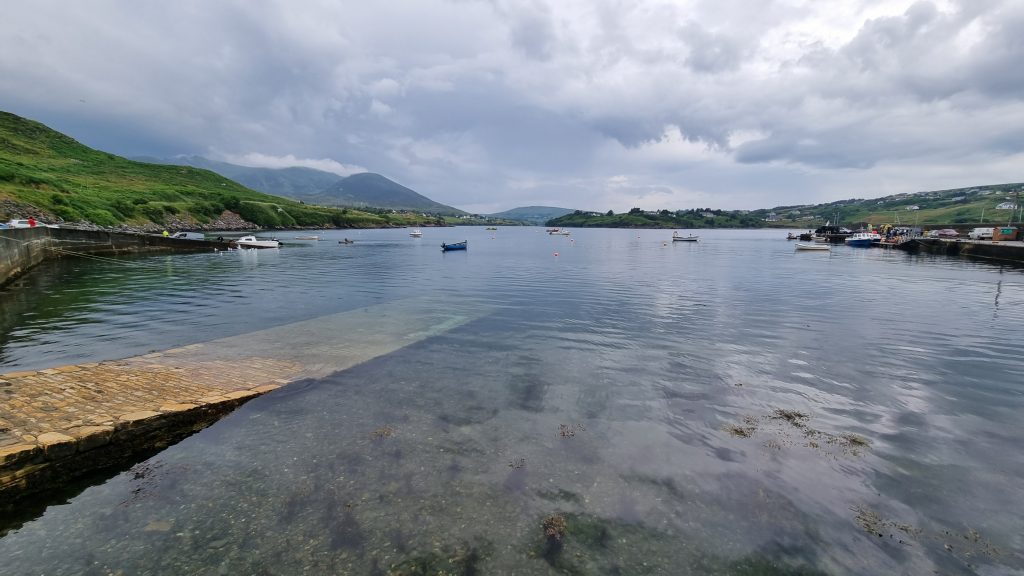
By Sasha Pryymak and Marysya Rudska
Destination
This year we went for a diving expedition to Donegal county, Ireland. Bringing our Clidive Yellow RIB, kits, compressors and a kitchen sink — all this to see the Northern Atlantic coast underwater. Our group was the first week of a two-week expedition.
Irish heatwave
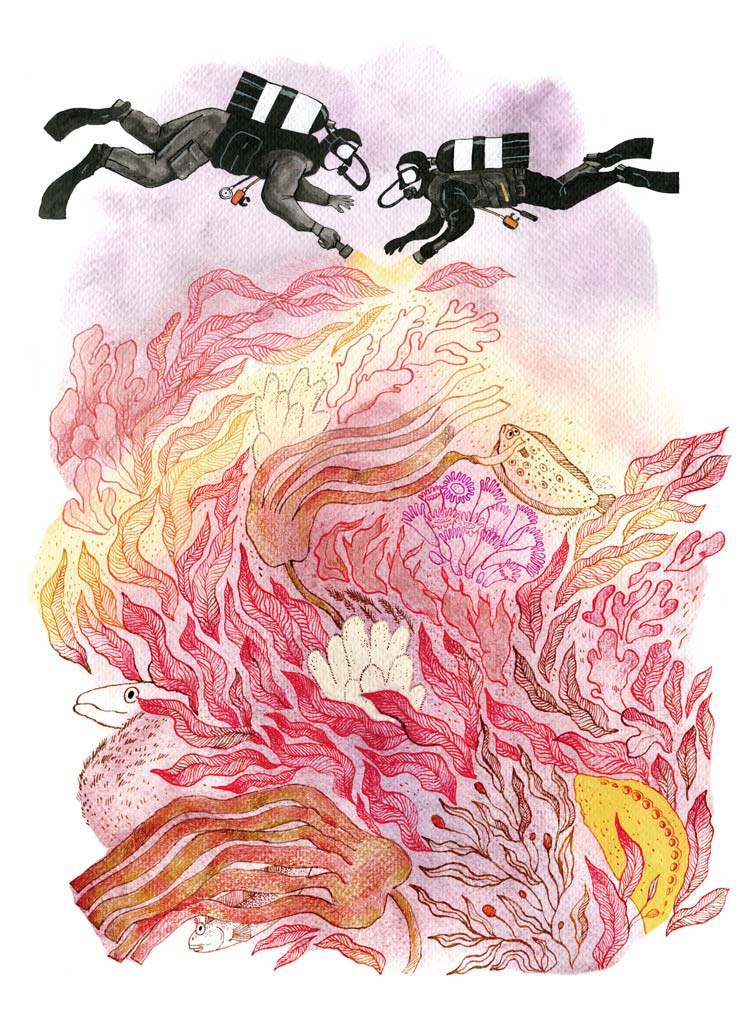
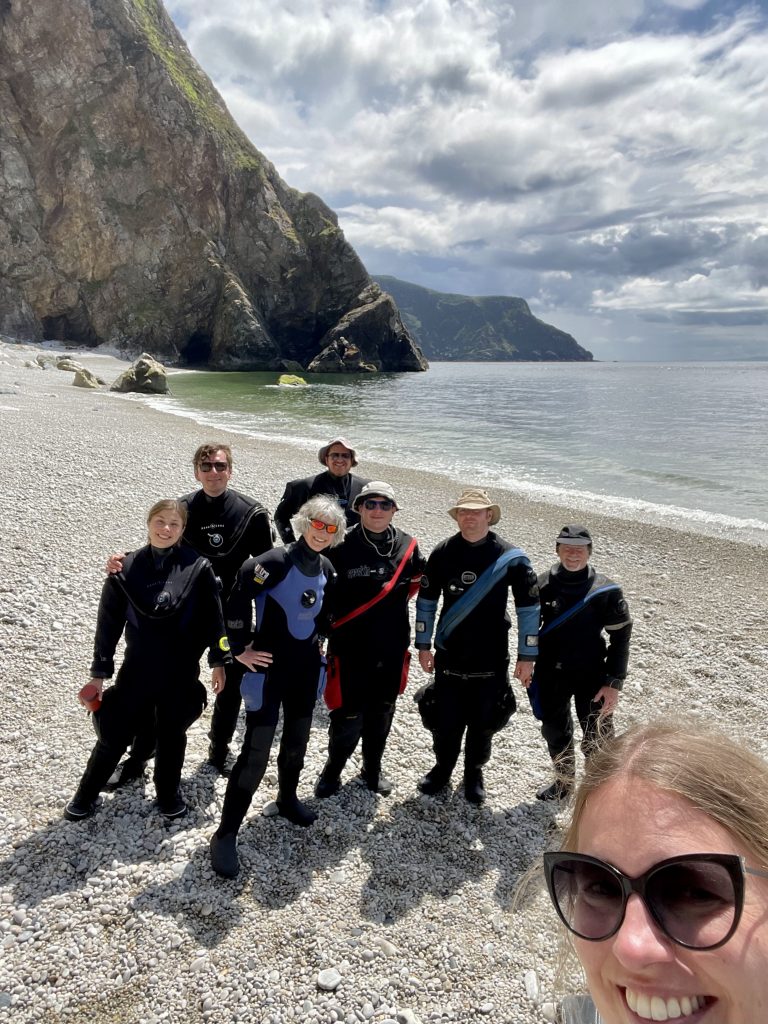
We were warmly greeted by the weather, with all the locals commenting on the unusual heatwave. Alas, it brought two phenomena. The first one was the thunderstorm shortly after our arrival.
A lightning bolt hit the electricity pole near our cottage, leaving us without fridge or light for the night and internet for another two days. The runoff coloured the harbour brownish for the next couple of days, luckily not affecting our dives offshore.
The second was the marine heatwave (https://www.rte.ie/news/2023/0619/1390020-marine-heatwave/ ) with the surface water temperatures breaking historic records. We witnessed the heat wave effects with the unusually deep thermoclines for the surface water which were down to 10-18m heated to 18-16C. After passing the shimmering thermoclines we were down into less plankton-rich and more transparent cold 11C waters.
Dives
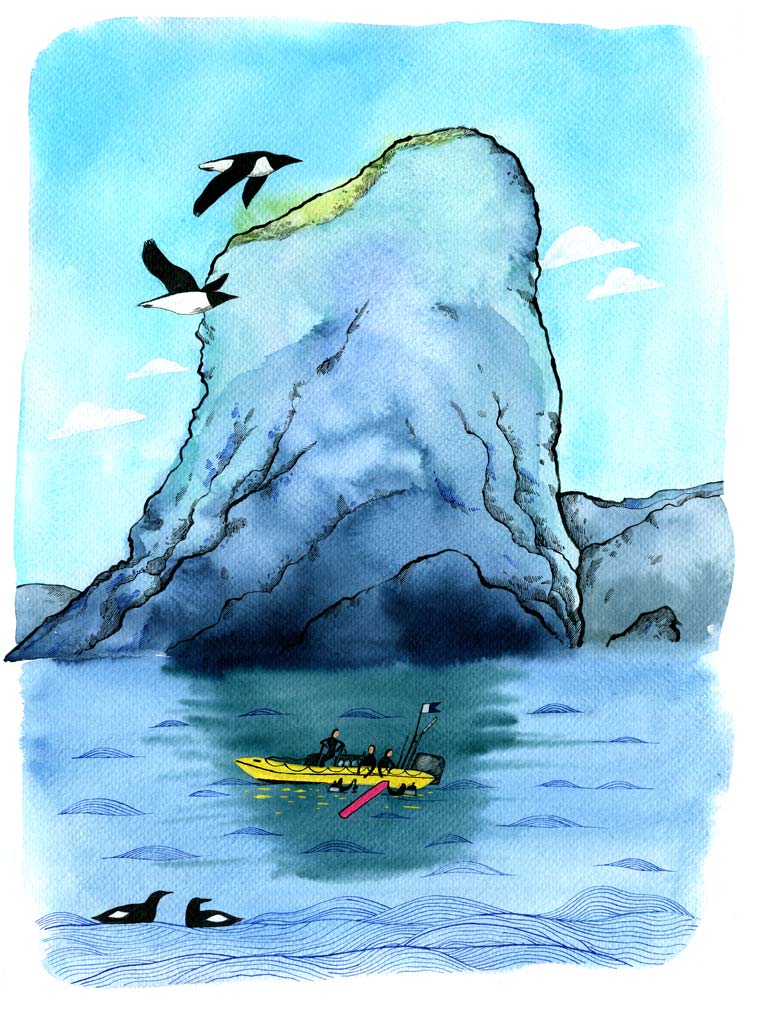
Our dives started from a small pier in Teelin, competing with local sea tours for space on the pier. These tours had quite a bit to offer, allowing us to enjoy the scenery of Sliabh Liag too — one of the highest sea cliffs in Europe at over 600m tall. For our RIB the foot of these cliffs was just 15 min away, offering prime little-explored spots for diving.
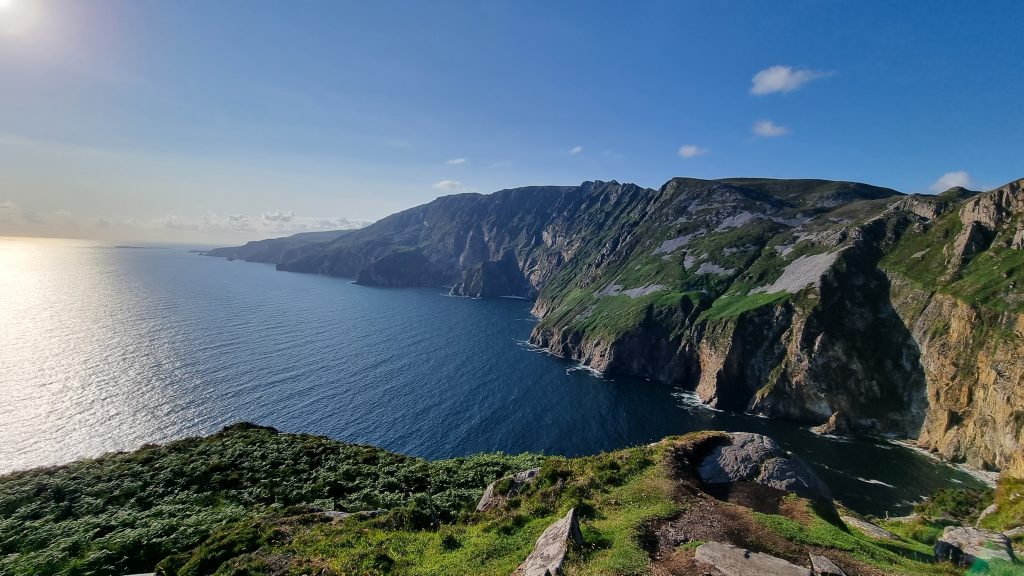
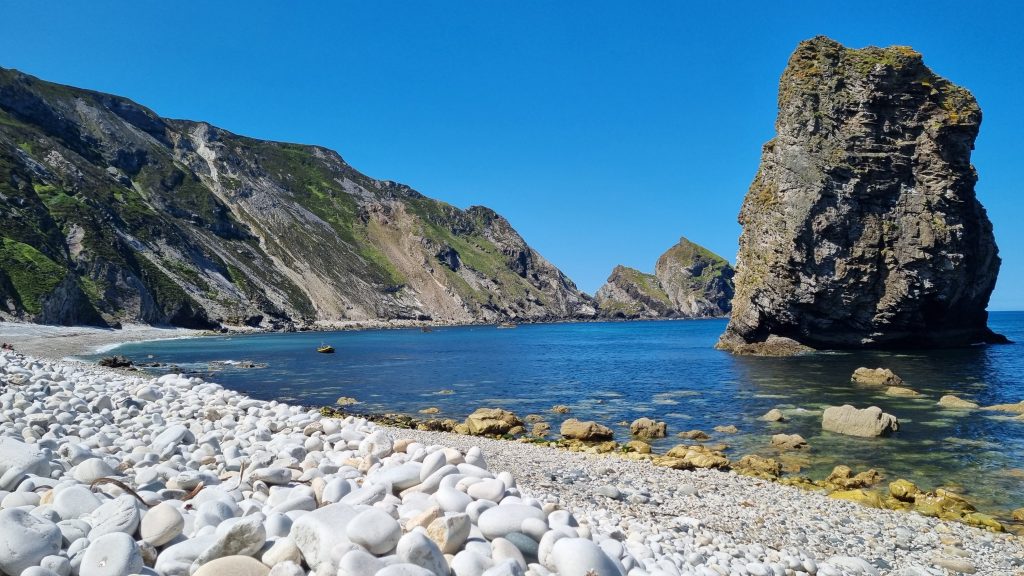
It was hard to feel the greatness of these cliffs from beneath. Only tiny sheep scattered and a few people way up on the viewpoints betrayed their true size. Our private geologist by education, Mark O., provided us with well-educated guesses on the rocks’ age plus/minus another billion years, and explained the nature of these metamorphic cliffs. We enjoyed the views of huge slabs, layered rock backed and twisted by millenia, with cracks filled by felt spar (or so we were taught).
We traversed the coast 20 nautical miles further west and north, which offered us a selection of stunning views of cliffs, coves, smaller caverns, spotted with sandy or rocky beaches.
Beneath the surface, we found the promised continuation of the scenery above — steep walls everyone’s been looking for, huge boulders creating gullies and opening caverns. Diving plans didn’t restrict us much, as we had little current or tidal difference. The geology underwater was not as apparent, as most rocks were tightly covered with the sea life all the way down to ~30m, offering scenic dives full of life.
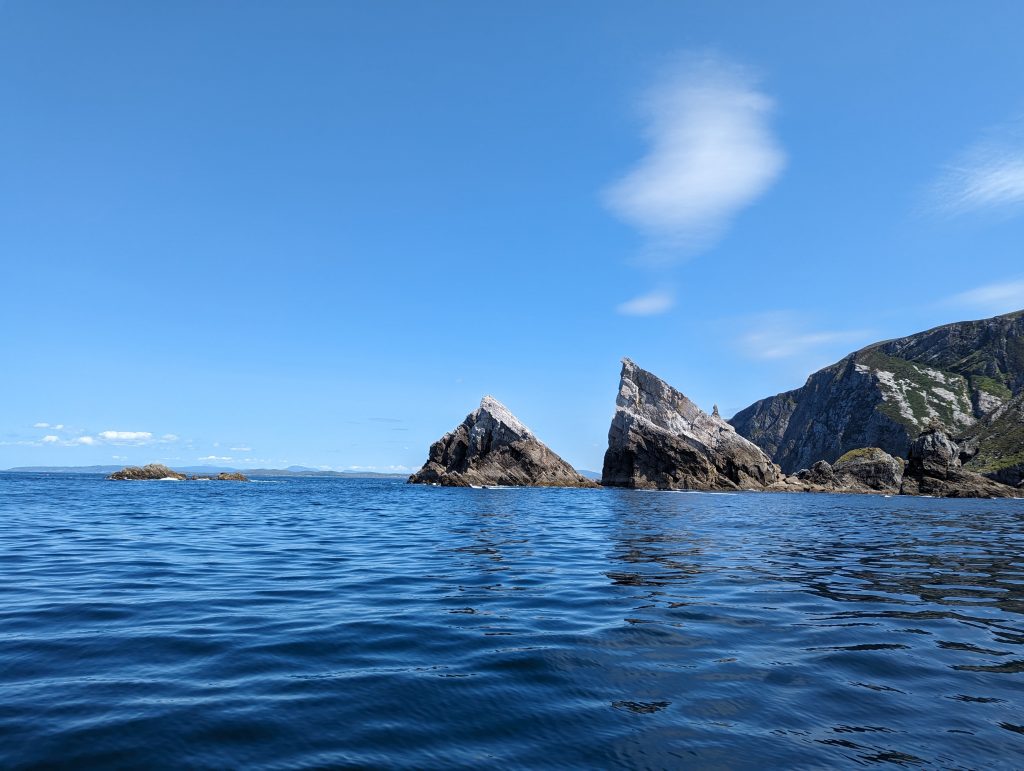
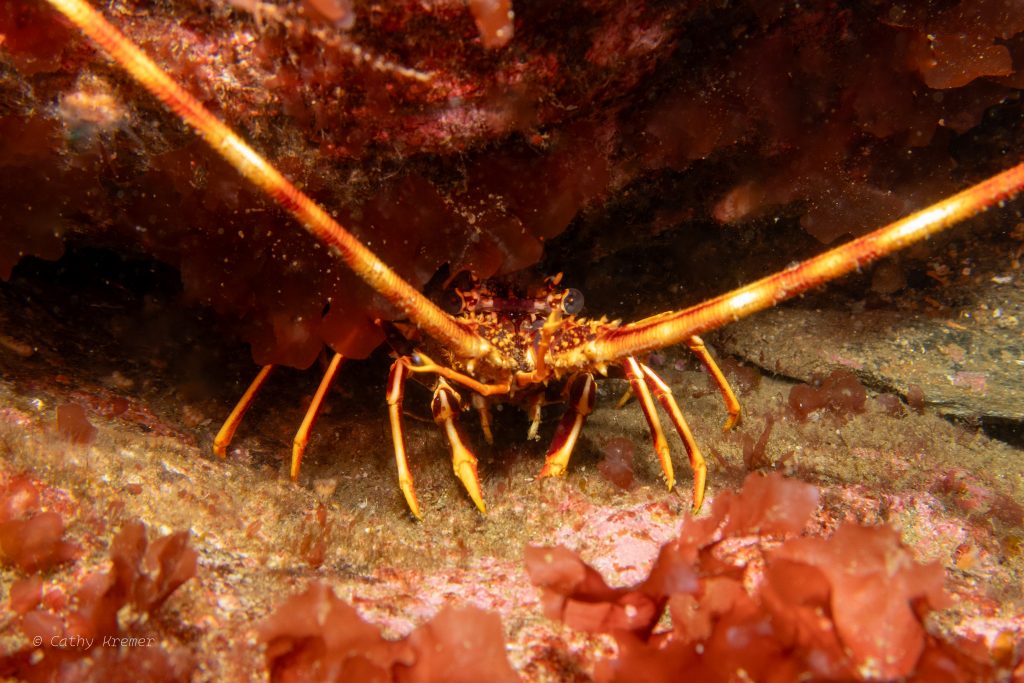
Reflecting on the trip on the last night in the pub with everyone, Chris summarised that underwater life was a mixture of Scottish west coast diving and diving off the end of Cornwall. Abundance of colourful jewel anemones covering the walls, large number of diverse nudibranchs and sea hares, yet less frequent crustaceans except for one lobster pot with seven lobsters sharing its space. The smaller life was plentiful and diverse. The selection of species varied (see the appendix below for the selected ones). Even on the same site different buddy pairs were coming up with diverse experiences and sightings.
Diving under a huge rock with a bird colony paid off. Some divers experienced guillemots checking out their bubbles on a safety stop. Most folks had their memorable moments shared from the dives – seeing thornback ray, anglerfish, seals and once dolphins underwater.
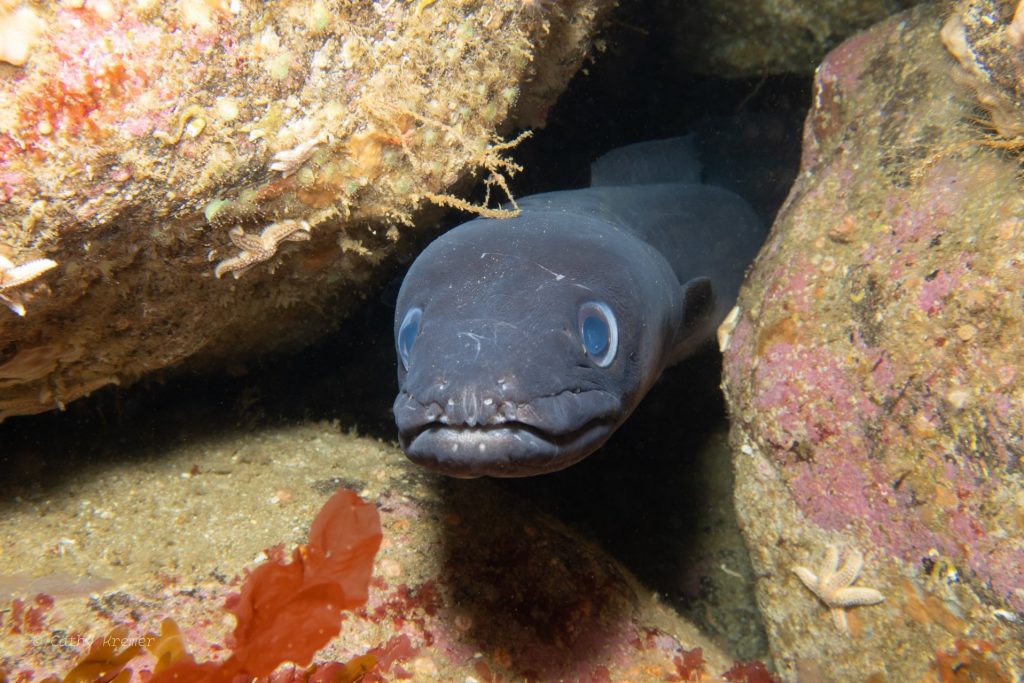
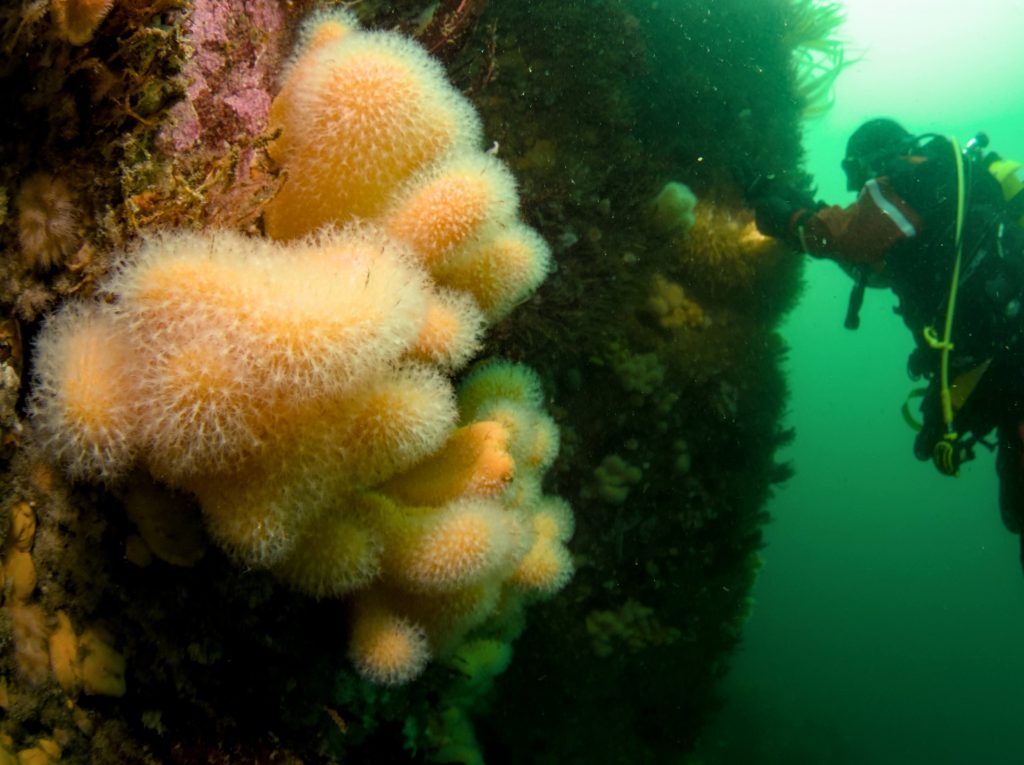
Given the hot surface waters, we had an abundance of plankton life to explore at our safety stops. A few folks noted compass jellies with teeny-tiny fish hiding inside them, huge jelly fish specimens, and smaller siphonophores floating around.
Alas, we had only occasional large fish, in smaller numbers than seen off Plymouth. Given the rich plankton and small life, we felt that overfishing could be the cause. Yet, we saw a few seals and dolphin pods that know how to find fish better than we do.
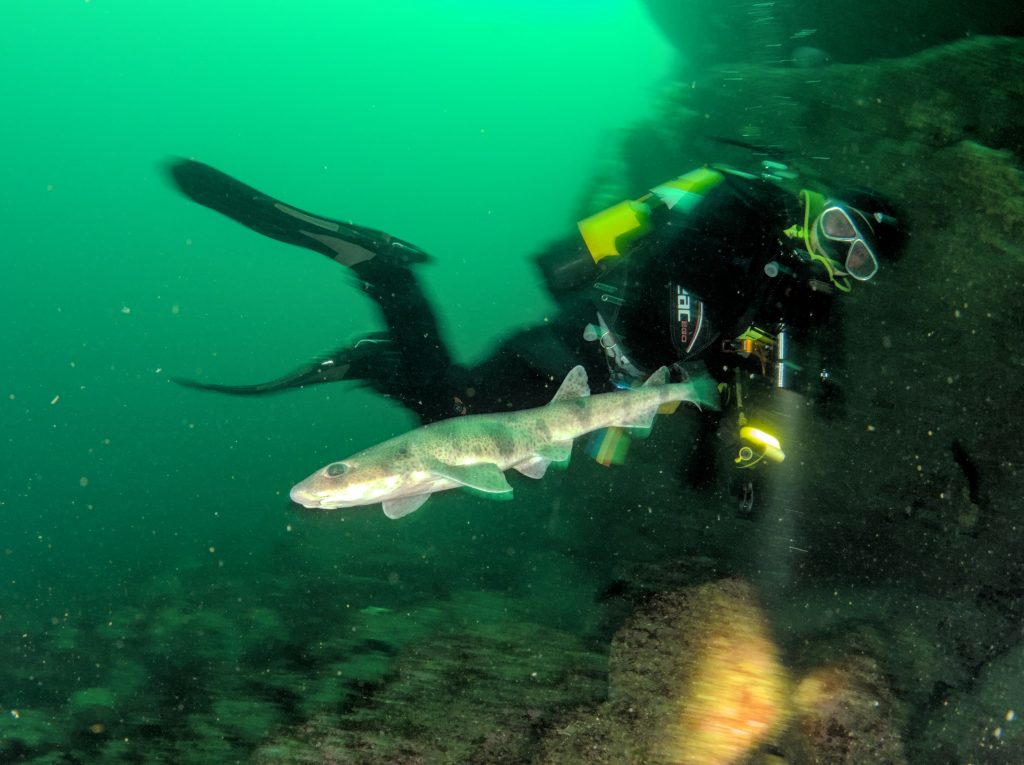
Life around the dives
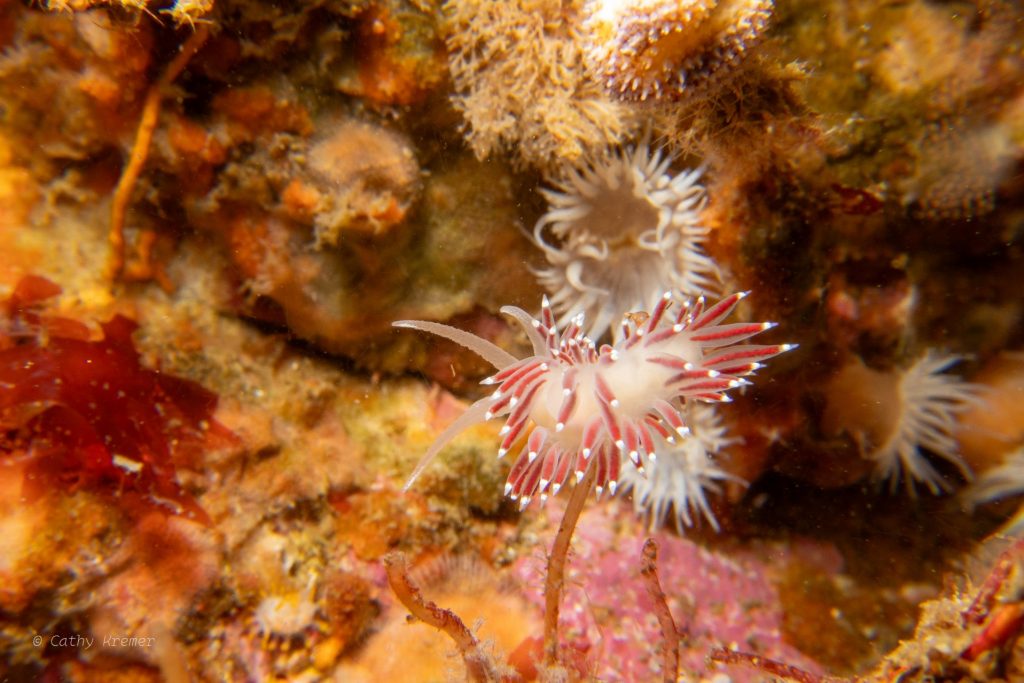
On every diving day, we had our lunch in prime spots along the coast. Only tourists with good binoculars could see us under Sliabh Liag cliffs on an isolated sandy beach having lunch on the first day. Later through the week, we landed with our sandwiches in small coves and beaches, some of which would not be accessible otherwise.
Teelin had fine dining, a pub and a music venue combined in “The Rusty Mackerel”, where we opened and closed our diving week. We stayed in a couple of cottages a short walk closer to the cliffs, passing by an old red tractor which cheered us with its surprised expression.
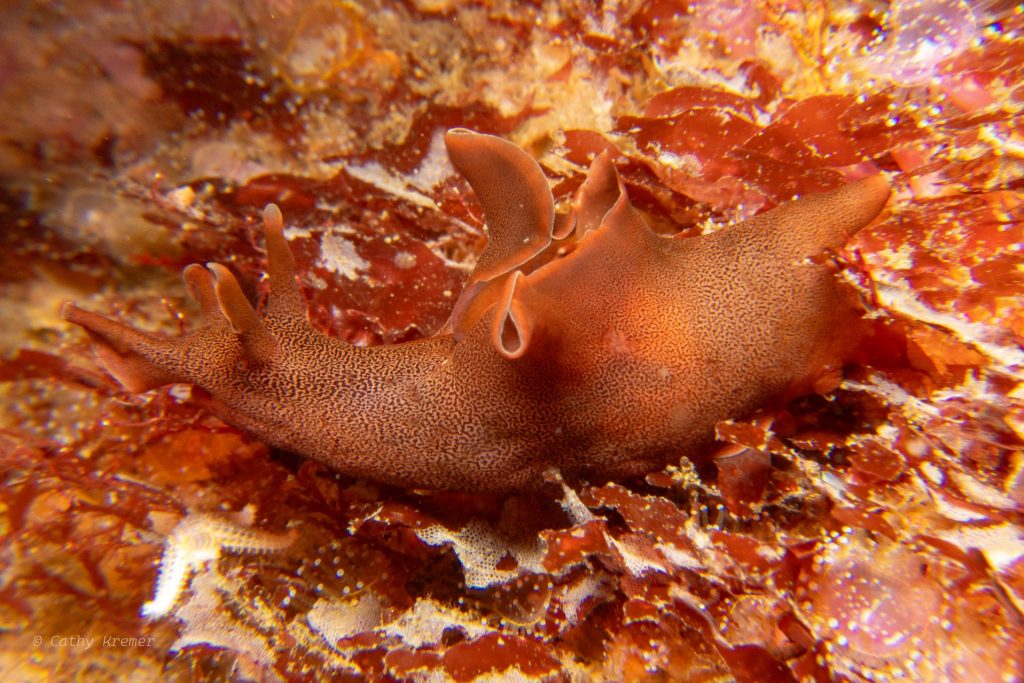
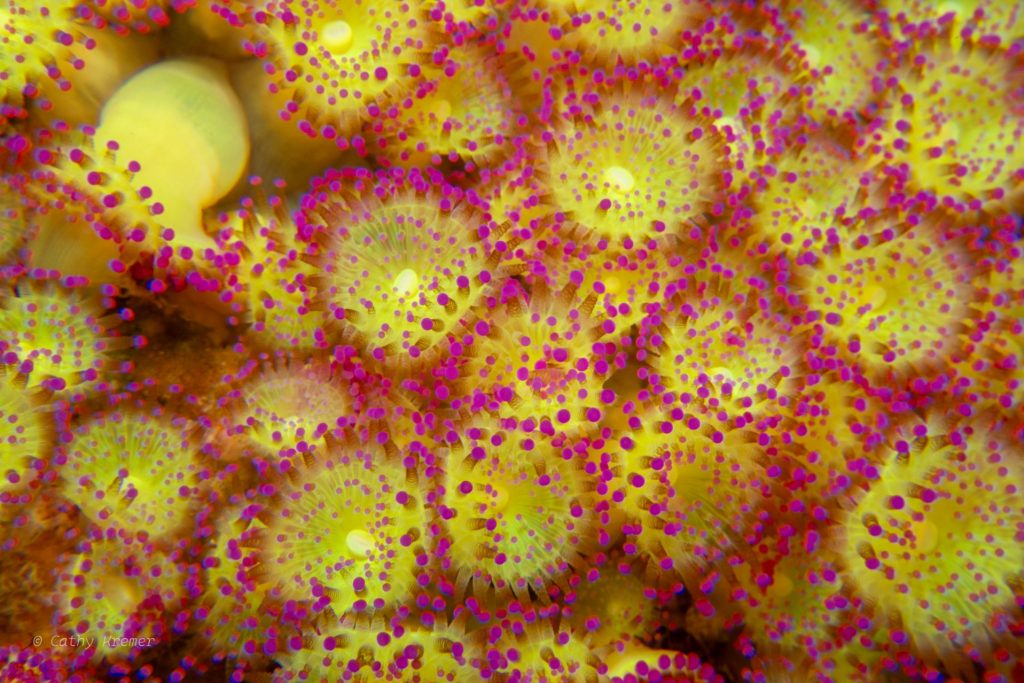
Our trip as a true expedition offered us exploration of new remote locations. And it was inclusive, inviting toddler Lina and her grandma Ganna to wait for us on the shore. They joined our exploration in their own way – by learning flower names and how to speak sheep on the cliffs above.
Selected list of species we saw on our dives
Mammals:
- Common dolphin
- Grey seal
Birds
- Puffins
- Razor bills
- Guillemots (underwater including)
- Black guillemots
- Herring gull
- Fulmars
- Gannets
- Cormorants
- Oystercatcher
Fish:
- Thornback ray
- Anglerfish
- Topknot (Zeugopterus punctatus)
- Scorpion fish
- Small-spotted catshark
- Clingfish
- Tompot blenny
- Leopard-spotted goby
- Female Black-faced blenny(Chris saw)
- Black blenny
- Ballan wrasse
- Conger eel
Mollusks (and especially memorable Nudibranchs):
- Sea hare
- Hairy spiny doris (Acanthodoris pilosa)
- Crystal sea slug (Antiopella cristata)
- Milky-white sea slug (Carronella pellucida)
- Bushy-backed sea slug (Dendronotus frondosus)
- Violet sea slug (Edmundsella pedata)
- Slender facelina (Facelina auriculata)
- Orange-clubbed sea slug (Limacia clavigera)
- Polycera faeroensis
- Four-striped polycera (Polycera quadrilineata)
- Arctic cowrie (Trivia arctica)
- Open simnia (Simnia patula)
- Crustaceans:
- European spiny lobster (Palinurus elephas)
- Edible crab (Cancer pagurus)
- Common spider crab (Maja brachydactyla)
- Skeleton shrimps
- Sea spiders
- Spiny squat lobster
- Common prawn (Palaemon serratus)
Jellies:
- Comb jelly
- Sea gooseberry
- Siphonophora (unknown)
- Compass jelly
Echinoderms:
- Crevice sea cucumber
- Cotton spinner
- Seven-armed starfish
- Common starfish
- Spiny Starfish
- Feather starfish
- Worms
- Candy striped flatworm
- Corals, anemones and sponges
- Dead man fingers
- Jewellery anemones
- Plumose anemones
- Dahlia anemones
- Boring sponge♥
